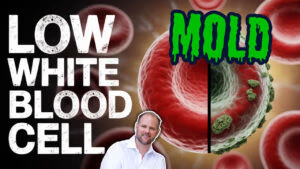Fluoroquinolone toxicity, commonly known as getting “floxed,” occurs when fluoroquinolones, a type of antibiotic, unintentionally harm your body’s cells. These medications are designed to target bacteria, but sometimes affect your body’s mitochondria, the tiny powerhouses in your cells. This can lead to a range of symptoms, affecting your health at a cellular level.
The Science Behind Fluoroquinolones: How Do Fluoroquinolones Work?
Your cells, including mitochondria, have their own DNA. Mitochondria, which were once bacteria themselves, are crucial for energy production in your cells. But fluoroquinolones can’t distinguish between the DNA of harmful bacteria and the DNA in your mitochondria. This leads to mitochondrial dysfunction, affecting energy production and overall cellular health.
The Unintended Target: Mitochondria are the Collateral Damage of Fluoroquinolones
Your cells, including mitochondria, have their own DNA. Mitochondria, which were once bacteria themselves, are crucial for energy production in your cells. But fluoroquinolones can’t distinguish between the DNA of harmful bacteria and the DNA in your mitochondria. This leads to mitochondrial dysfunction, affecting energy production and overall cellular health.
Symptoms and Effects of Fluoroquinolone Toxicity: The Impact on Your Body
When mitochondria are damaged, it can result in various symptoms throughout your body. People react differently to being FLoxed, and some people experience more severe or different floxing symptoms than others. The most common symptoms of floxed toxicity include issues like chronic fatigue, neurological symptoms, and digestive problems. Every cell in your body relies on mitochondria, so the effects of their dysfunction can be widespread and significant.
Symptoms of fluoroquinolone toxicity
- Musculoskeletal Issues: Floxed symptoms often involve the musculoskeletal system and include joint pain, muscle pain, tendonitis, and a heightened risk of tendon rupture. People might experience aching, sharp pains, or a general weakness in their muscles and joints.
- Neurological Symptoms: These can range from headaches and dizziness to more severe symptoms like neuropathy (nerve damage causing tingling, numbness, or pain), seizures, or cognitive impairments such as memory problems and confusion.
- Gastrointestinal Distress: Symptoms like nausea, diarrhea, abdominal pain, and digestive issues are common. Some people may also experience a change in their appetite or issues like irritable bowel syndrome.
- Psychiatric Symptoms: Anxiety is a very common complaint from patients who have been floxed. Depression, mood swings, and other mental health issues can be a part of fluoroquinolone toxicity.
- Cardiovascular Problems: Some individuals might experience changes in blood pressure, heart palpitations, or other heart-related symptoms.
- Skin Reactions: Rashes, itching, and other skin issues can occur, sometimes accompanied by sensitivity to the sun.
- Sensory Symptoms: Sensory symptoms of floxed toxicity can include altered vision, hearing issues, or sensitivity to light and sound.
- Fatigue: Extreme tiredness and lack of energy, not relieved by rest, is also a common complaint of patients who have been floxed.
- Autonomic Symptoms: FLoxed symptoms of the autonomic nervous system can be some of the most serious, including issues with regulating body temperature, sweating, and other involuntary body functions.
How to Heal from Fluoroquinolone Toxicity: Fluoroquinolone Toxicity Treatment and Recovery
Recovering from being floxed involves supporting your mitochondria and overall cellular health. This can include lifestyle changes, dietary adjustments, and sometimes specific supplements for fluoroquinolone toxicity. Each person’s path to recovery is unique, but the focus is on helping your body heal at a cellular level.
Supplements and Strategies
Certain supplements might aid in the recovery process by supporting mitochondrial health and reducing inflammation. It’s important to consult with a healthcare professional to find the right approach for you.
Prevention and Awareness: Understanding the Risks and Being Informed
Awareness is key in preventing fluoroquinolone toxicity. If you are prescribed these antibiotics, it’s important to understand the potential risks and discuss them with your healthcare provider. Being informed helps you make the best decisions for your health.
Conclusion: Taking Control of Your Health
Understanding fluoroquinolone toxicity is crucial for anyone who has been affected by these medications. By learning about the effects on mitochondria and exploring ways to support your body’s recovery, you can take steps towards regaining your health and well-being. Remember, healing from fluoroquinolone toxicity is a journey, and you’re not alone in it.
Frequently Asked Questions (FAQ)
Being "floxed" is a term for experiencing Fluoroquinolone Toxicity. It occurs when antibiotics from the fluoroquinolone class (like Cipro or Levaquin) unintentionally damage the mitochondria in your cells. Since mitochondria are responsible for energy production, this damage can lead to a wide range of debilitating symptoms throughout the body.
Symptoms are widespread because every cell relies on mitochondria. The most common include severe musculoskeletal pain (joints, muscles, tendons), neurological issues like neuropathy (tingling, numbness) and anxiety, extreme fatigue, gastrointestinal distress, and autonomic nervous system problems affecting temperature regulation and heart rate.
Mitochondria are the "powerhouses" of your cells. When their DNA is damaged by fluoroquinolones, they cannot produce sufficient energy (ATP). This energy deficit affects tissues with high energy demands first—like nerves, muscles, and tendons—leading to the diverse symptoms of pain, fatigue, and neurological dysfunction.
Yes, recovery is possible. The path to healing focuses on supporting mitochondrial health and cellular repair. This involves strategic dietary changes, specific supplements to aid mitochondrial function, lifestyle adjustments to reduce stress on the body, and working with a knowledgeable healthcare professional to create a personalized plan.
The key to prevention is awareness and advocacy. If a fluoroquinolone antibiotic is prescribed, ask your doctor if it is absolutely necessary, especially for common infections where safer alternatives may exist. Discuss the potential risks so you can make an informed decision about your treatment.







